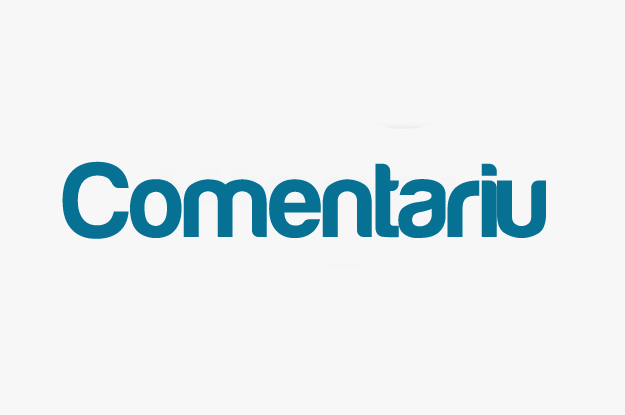
Victor GOTISAN,
media researcher
 is being in great part thanks to the media network that it had managed to build in the past few years. According to some data, countries in the ex-soviet space are the most exposed to Russian propaganda. For instance, Pervii Kanal is the television with the widest audience in 9 of the 15 ex-soviet countries, the Republic of Moldova being among the nine countries.
is being in great part thanks to the media network that it had managed to build in the past few years. According to some data, countries in the ex-soviet space are the most exposed to Russian propaganda. For instance, Pervii Kanal is the television with the widest audience in 9 of the 15 ex-soviet countries, the Republic of Moldova being among the nine countries.
What can we do in order to diminish the harmful effects of this propaganda? The „Bringing Plurality & Balance to Russian Language Media” report, written with support from the European Endowment for Democracy (EED) organization, proposes alternatives to the propagandistic actions of the Kremlin mass-media. The purpose was to present practical solutions for the support and consolidation of the independent Russian language media in Eastern Partnership countries. The paper mentions that the language (Russian in this case) should not be an element that would divide societies or people. Russian speakers must have an access to a quality and correct media content. As a result, “five blocks”/instruments were identified for the counteraction of Russian propaganda:
a. Creating a so-called regional “news hub” that would respect the principles of equality, precision and vigilance (a news agency of sorts);
b. Creating a common platform („content factory”) with the purpose of producing quality documentary films and entertainment broadcasts (including social films, theatre and reality shows);
c. Creating a media center for the training of Russian speaking journalists, that would train quality specialists, monitor the media content and organize the exchange of experience between journalists and media organizations of the Eastern Partnership;
d. Creating a joint financial fund, oriented towards financing Russian language projects, initiatives and media institutions as well as the support of the new initiative;
e. All these must be integrated in a multimedia platform, with a global brand that would insure the distribution of the product towards a widest possible audience.
How do we diminish the propaganda from the Russian media?
On a short term, however, each country that is dependent on the Kremlin’s informational and media space must create its own protection mechanisms and instruments. In the case of the Republic of Moldova, these would be:
- Creating qualitative media content in Russian. First of all, the local media space needs an alternative to the media content which is retransmitted by Russian television and radio stations on the territory of the Republic of Moldova. There are currently too few quality Russian language media institutions that would offer objective, equidistant and correct content in Russian (Newsmaker.md; TV7; Ziarul de Garda;)
- Functional factors/institutions/mechanisms for the regulation of media. Second of all, the (in) existence of a media institution that would coordinate and, why not, filter the content which is rebroadcasted by media institutions in Moscow. The Coordinative Council of the Audiovisual remains, for the time being, an institution which is unable to propose and develop a clear (correct and transparent) instrument for the regulation of the propagandistic content of the Kremlin mass-media;
- The low media culture of society. Third, (all!) media organizations must develop training programs as well as information and awareness raising campaigns regarding the eradication of the society’s media culture (an example in this case is the media campaign against false information, organized by the CIJ).
The propaganda of the Kremlin mass-media imposes a dilemma on ex-soviet countries. On the one hand, there is the right to information of the access to information, which is a fundamental right guaranteed by the Constitution of the country. On the other hand we have what experts call the protection of the informational space. Here, we have two scenarios.
The first of them would impose an absolute permissiveness regarding the access and accessing of any type of media channel. This scenario may be applied only when the degree of a society’s media culture is very high and every individual can differentiate between correct and denatured information. Unfortunately, for the moment, in the Republic of Moldova we cannot claim to have such a situation. Our country cannot compare itself at this chapter with states like Great Britain, Norway, Finland, Sweden or Canada, where media education is a compulsory discipline in the school curriculum.
The second scenario would impose the protection of the informational space of the country through the monitoring and filtering of the control over information coming from the outside (yet at the same time without neglecting the one from the interior). This requires the functionality of a structure that would regulate the informational space of a society.
When it comes to choosing between a healthy censorship aiming at sanitizing and cleaning the informational space, and the right to free information, a young, transitional society must choose the former, at least until it builds a society that is healthy from a media standpoint.
--------------------
The article was published within the Advocacy Campaigns Aimed at Improving Transparency of Media Ownership, Access to Information and promotion of EU values and integration project, implemented by the IJC, which is, in its turn, part of the Moldova Partnerships for Sustainable Civil Society project, implemented by FHI 360.This article is made possible by the generous support of the American people through the United States Agency for International Development (USAID). The content are the responsibility of author and do not necessarily reflect the views of USAID or the United States Government.










